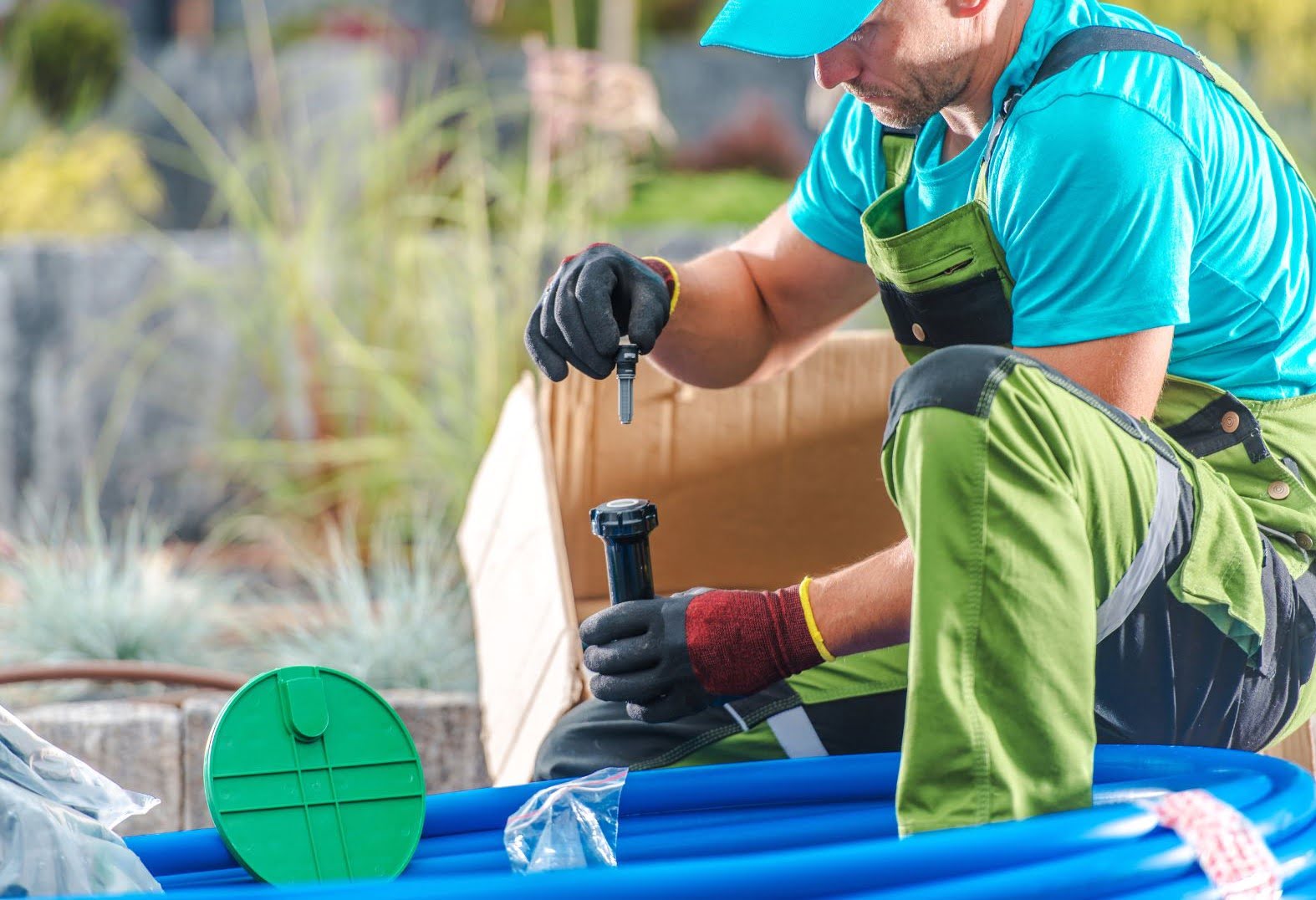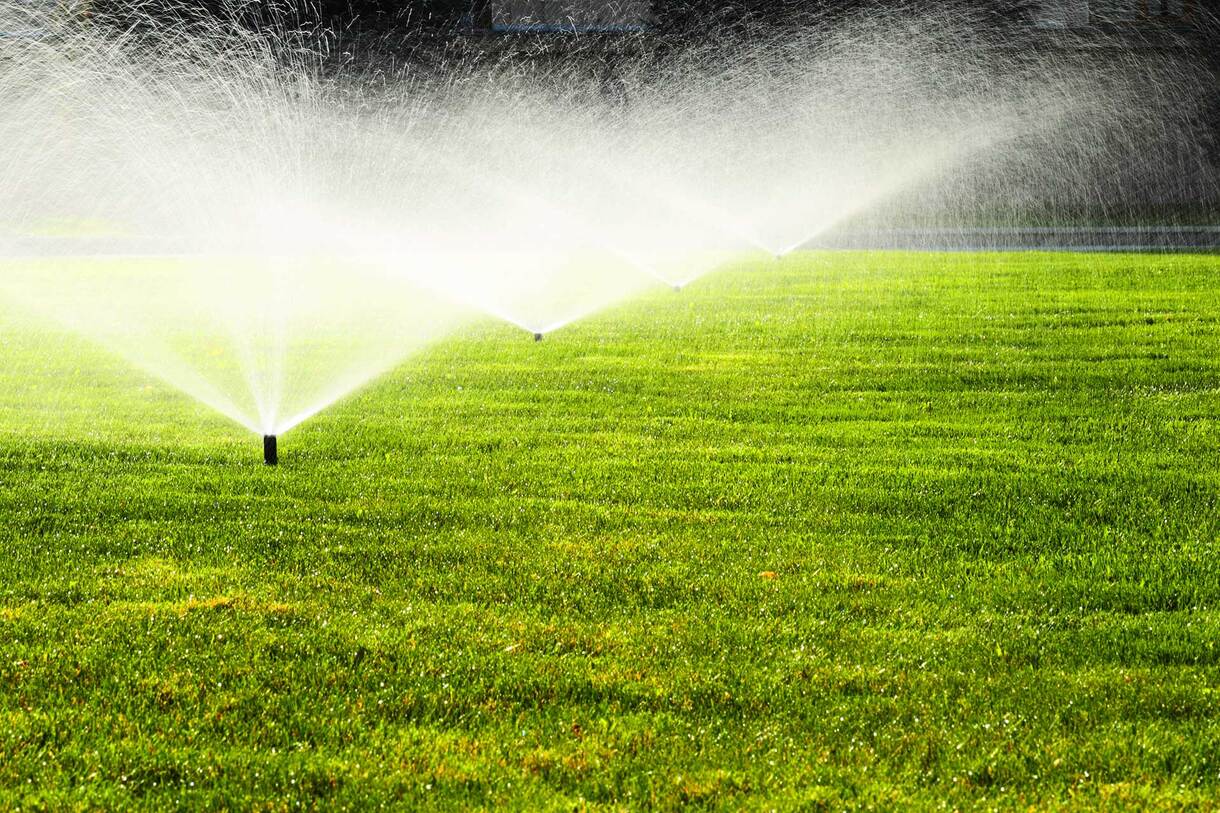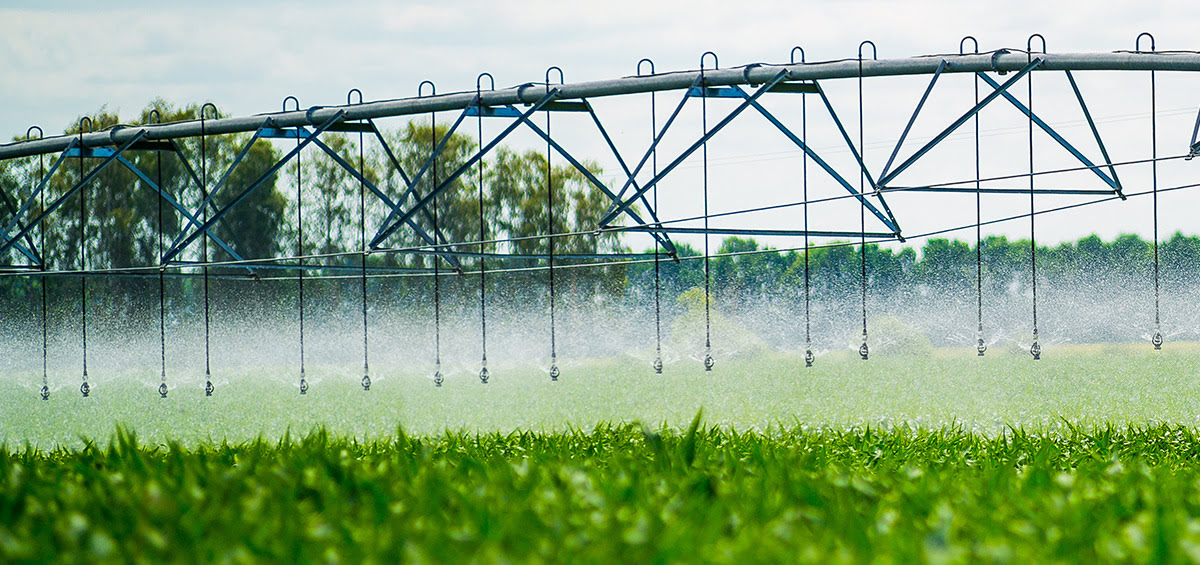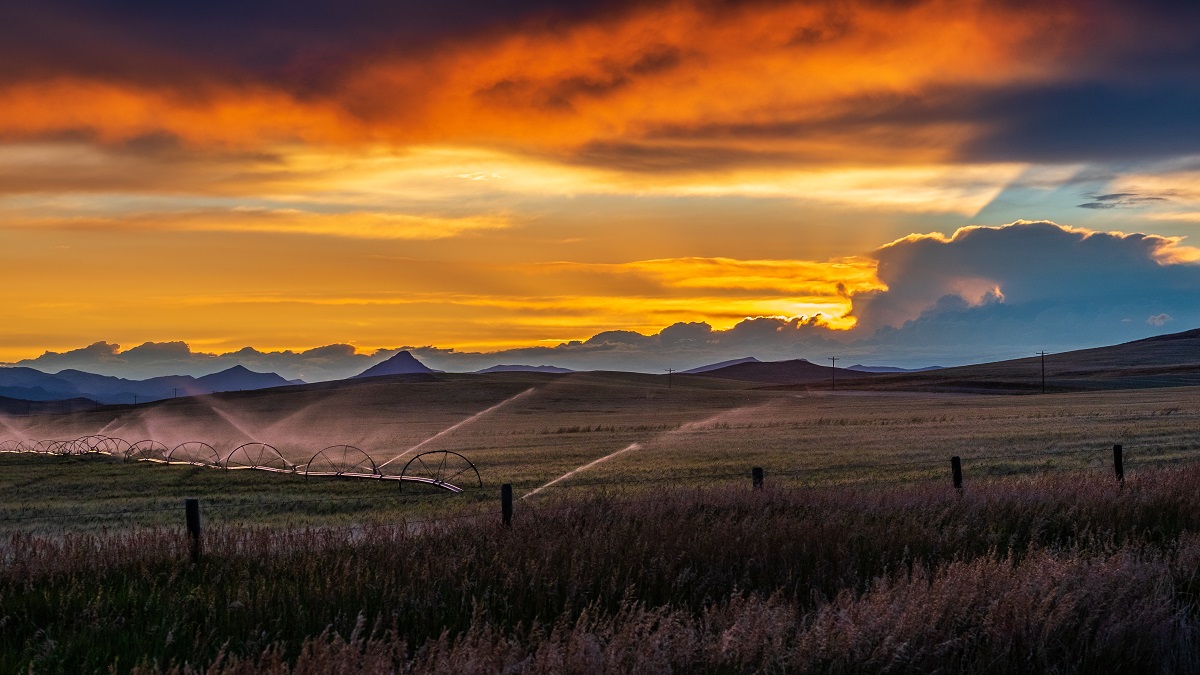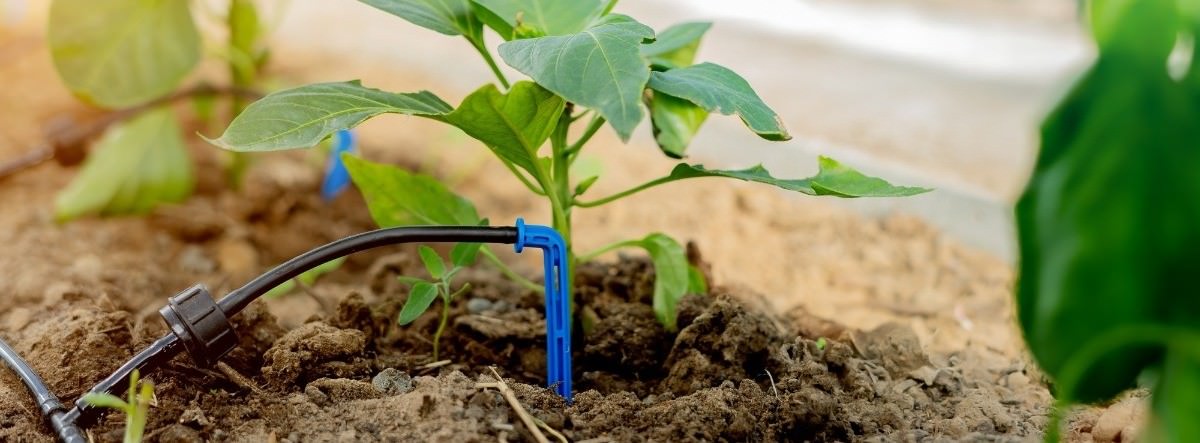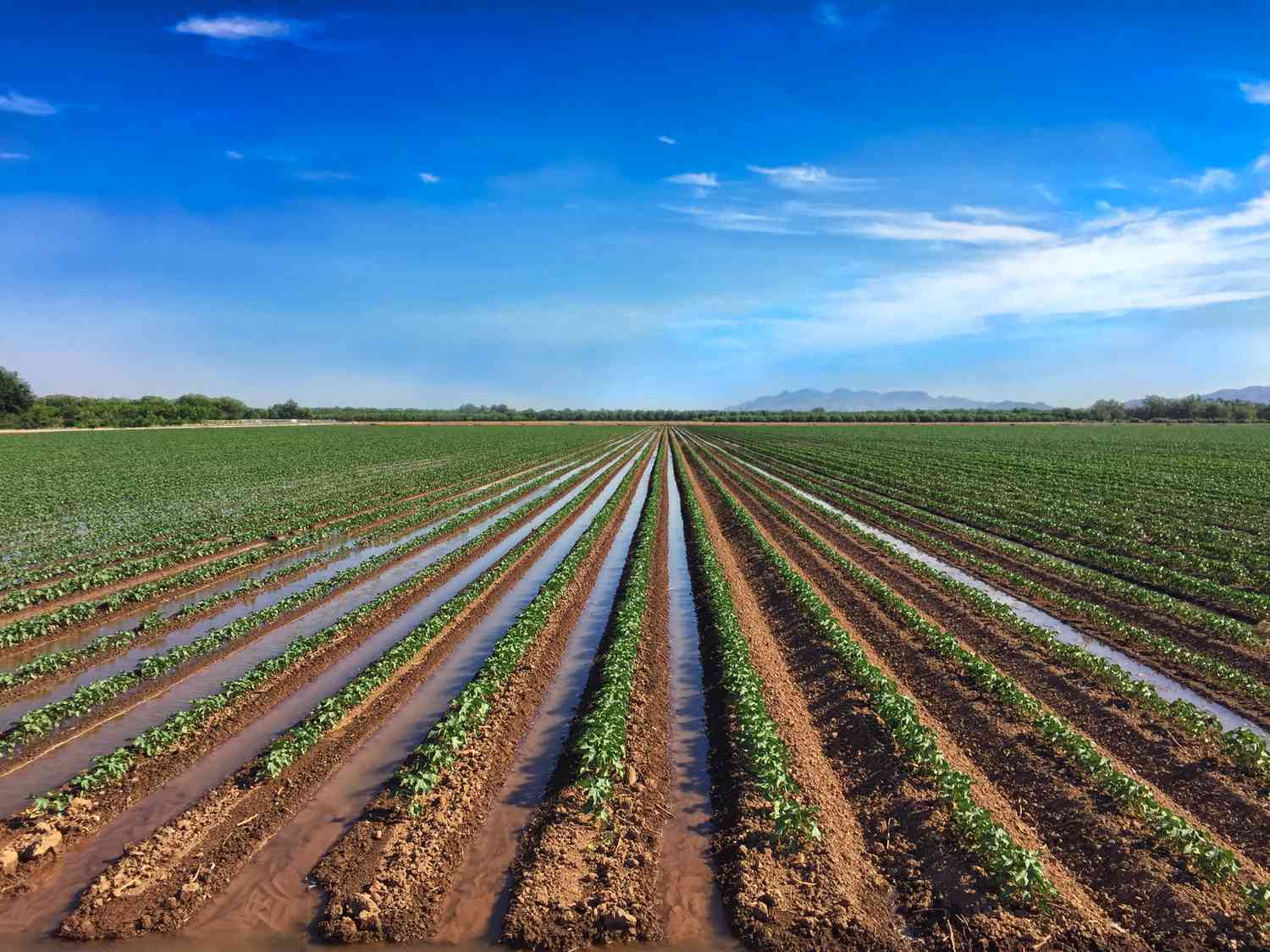Home>Gardening Basics>Tools and Equipment>What Is Ad Irrigation


Tools and Equipment
What Is Ad Irrigation
Modified: January 22, 2024
Learn about the essential tools and equipment for effective ad irrigation. Explore the best strategies and products to optimize your advertising campaigns.
(Many of the links in this article redirect to a specific reviewed product. Your purchase of these products through affiliate links helps to generate commission for Chicagolandgardening.com, at no extra cost. Learn more)
Table of Contents
Introduction
Welcome to the world of ad irrigation, a cutting-edge technique that revolutionizes the way we water and nurture plants. In today’s fast-paced and technologically advanced world, traditional methods of irrigation are quickly becoming outdated. Ad irrigation, also known as automated drip irrigation, offers a more efficient, precise, and sustainable solution for watering crops, gardens, and landscapes.
As the global population continues to grow, the demand for food and water resources is reaching unprecedented levels. Traditional irrigation methods, such as overhead sprinklers or flood irrigation, have proven to be inefficient and wasteful, leading to excessive usage of water, nutrient leaching, and uneven watering distribution. Ad irrigation provides an innovative and sustainable alternative by delivering water directly to the roots of plants, optimizing water usage and minimizing wastage.
Ad irrigation systems utilize a network of tubes, valves, and emitters to distribute water directly to the base of plants, ensuring that only the necessary amount of water is delivered. This targeted approach not only reduces water consumption but also minimizes the growth of weeds and the spread of diseases, resulting in healthier plants and higher crop yields.
One of the key advantages of ad irrigation is its ability to cater to the unique water requirements of different plants. By customizing the system’s parameters, such as water flow rate, duration, and frequency, farmers and gardeners can deliver the ideal amount of water to each plant, considering factors such as soil type, plant maturity, and environmental conditions. This level of precision and control not only saves water but also promotes optimal plant growth and development.
In addition to its water-saving benefits, ad irrigation also saves time and labor. Traditional irrigation methods often require manual labor, involving the setting up and moving of sprinklers or the monitoring of flood irrigation. Ad irrigation automates the process, eliminating the need for constant supervision and reducing manual labor. This allows farmers and gardeners to focus their time and efforts on other important activities, increasing productivity and efficiency.
With the increasing emphasis on sustainable agriculture and water conservation, ad irrigation is gaining popularity worldwide. Government incentives and programs aimed at promoting efficient water usage further contribute to the widespread adoption of ad irrigation systems. Whether you are a small-scale farmer, a gardener, or a landscape enthusiast, ad irrigation offers a viable solution to maximize the health and productivity of your crops and plants, while minimizing water wastage.
Join us as we explore the world of ad irrigation, uncovering its benefits, working mechanisms, common types of systems, implementation factors, and much more. Discover how this innovative technique is reshaping the way we irrigate, making water usage more efficient, sustainable, and environmentally friendly.
Definition of Ad Irrigation
Ad irrigation, also known as automated drip irrigation, is a method of delivering water directly to the base of plants through a network of tubes, valves, and emitters. Unlike traditional irrigation methods that rely on sprinklers or flood irrigation, ad irrigation provides precise and targeted watering to optimize water usage and plant health.
This innovative technique involves the installation of a system that includes main supply lines, sub-main lines, and lateral lines. The main supply line connects to a water source, which can be a well, pond, tank, or municipal water supply. From the main supply line, sub-main lines branch out, transporting water to various sections of the garden, landscape, or field. Finally, lateral lines with emitters are installed near the plants, delivering water directly to the root zone.
The emitters used in ad irrigation systems are designed to emit water at a slow rate, typically measured in gallons per hour (GPH). This slow and controlled release allows the water to penetrate the soil and reach the roots, ensuring efficient absorption and minimizing runoff. The spacing between the emitters and the flow rate can be adjusted to suit the specific water requirements of different plants.
Ad irrigation systems are typically controlled by timers or automated controllers, which regulate the frequency and duration of watering. This automation eliminates the need for manual intervention and ensures that plants receive water consistently and at the optimal time. Some advanced ad irrigation systems also include sensors that measure soil moisture levels, enabling the system to adjust watering schedules based on real-time data.
The benefits of ad irrigation extend beyond efficient water usage. By delivering water directly to the root zone, ad irrigation reduces the growth of weeds and minimizes the spread of diseases. Additionally, the targeted delivery of water prevents foliage from getting wet, reducing the risk of fungal diseases and minimizing water evaporation.
Ad irrigation systems are versatile and can be used in a variety of applications, including agriculture, horticulture, landscaping, and even home gardens. They can be customized to accommodate different soil types, plant species, and growth stages. Whether you are growing crops, maintaining a garden, or nurturing a landscape, ad irrigation offers a practical and sustainable solution for optimal plant health and water conservation.
As the demand for efficient water usage and sustainable agriculture continues to increase, ad irrigation is gaining popularity worldwide. Its ability to save water, reduce labor, and promote healthier plants makes it an attractive choice for farmers, gardeners, and landscapers. By implementing ad irrigation, individuals and industries can contribute to water conservation efforts while ensuring the long-term productivity and sustainability of their plants and landscapes.
Benefits of Ad Irrigation
Ad irrigation, also known as automated drip irrigation, offers a range of benefits that make it an attractive choice for farmers, gardeners, and landscapers. From water conservation to improved plant health, here are some key advantages of ad irrigation:
1. Water Efficiency: Ad irrigation systems deliver water directly to the root zone, minimizing water evaporation and runoff. This targeted approach reduces water waste and can result in water savings of up to 50% compared to traditional irrigation methods. By optimizing water usage, ad irrigation contributes to sustainable water management and conservation efforts.
2. Plant Health and Growth: With ad irrigation, plants receive water precisely where they need it – at the root zone. This promotes healthier root development and enables plants to absorb water and nutrients more efficiently. As a result, plants tend to grow stronger, produce higher yields, and exhibit improved overall health and vitality.
3. Weed Control: Traditional irrigation methods often result in excessive moisture on the soil surface, creating favorable conditions for weed germination and growth. Ad irrigation, on the other hand, delivers water directly to the roots, keeping the soil surface drier and inhibiting weed growth. This reduces the need for manual weeding or the use of chemical herbicides.
4. Disease Prevention: Ad irrigation minimizes the wetting of plant foliage, which can help reduce the occurrence of fungal diseases. Excessive moisture on leaves can create an environment for fungal spores to thrive. By delivering water directly to the root zone, ad irrigation reduces the likelihood of leaf wetness and decreases the risk of foliar diseases.
5. Nutrient Management: Ad irrigation systems can be equipped with fertigation capabilities, allowing the simultaneous application of water and fertilizers. This enables precise nutrient delivery to the plant roots, ensuring that they receive the necessary nutritional elements for optimal growth and productivity. Fertigation can be customized based on the specific nutrient requirements of different plants.
6. Energy and Labor Savings: Ad irrigation systems are highly efficient and require minimal energy to operate. Unlike traditional irrigation methods that may involve the use of pumps or sprinklers, ad irrigation relies on gravity and low-pressure systems. Additionally, the automation provided by timers and controllers reduces the need for manual labor, freeing up time and resources for other tasks.
7. Environmentally Friendly: Ad irrigation contributes to sustainable and eco-friendly practices by reducing water usage, minimizing fertilizer runoff, and preventing the spread of chemical pesticides. By adopting ad irrigation systems, individuals and industries can play a role in conserving water resources and mitigating the impact on the environment.
8. Flexibility and Adaptability: Ad irrigation systems can be easily customized to meet the specific needs of different plants, soil types, and environmental conditions. The spacing between emitters and the flow rate can be adjusted to accommodate plant spacing and water requirements. This flexibility makes ad irrigation suitable for a wide range of applications, from small home gardens to large-scale agricultural operations.
As the global focus shifts towards sustainable agriculture and responsible water usage, the benefits of ad irrigation become increasingly evident. By implementing ad irrigation systems, individuals and industries can conserve water, improve plant health and productivity, reduce labor and energy costs, and contribute to a more sustainable and environmentally friendly approach to irrigation.
How Ad Irrigation Works
Ad irrigation, also known as automated drip irrigation, operates based on a simple yet efficient mechanism. The system works by delivering water directly to the root zone of plants through a network of tubes, valves, and emitters. Let’s explore the key components and working principles of ad irrigation:
1. Main Supply Line: The ad irrigation system starts with a main supply line that connects to a water source, such as a well, pond, or municipal supply. This line serves as the primary conduit for water distribution throughout the irrigation system.
2. Sub-Main Lines: From the main supply line, sub-main lines branch out to various sections of the garden, landscape, or field. These sub-main lines transport water to their respective areas, minimizing pressure loss and ensuring efficient water delivery.
3. Lateral Lines: The sub-main lines further connect to lateral lines. These smaller tubes carry water closer to the plants and are typically positioned near or within the root zone. Lateral lines serve as the main distribution lines in ad irrigation systems.
4. Emitters: Emitters are installed at regular intervals along the lateral lines. These specialized devices control the flow and distribution of water to individual plants. Emitters can take different forms, such as drippers, micro-sprayers, or micro-jets, depending on the specific irrigation needs and plant requirements.
5. Water Regulation: Ad irrigation systems incorporate valves and regulators to control the water flow and pressure. These devices ensure that each plant receives the appropriate amount of water based on its needs and the surrounding environment. Flow or pressure regulators maintain consistent water delivery regardless of variations in the water source pressure.
6. Automation and Control: Ad irrigation systems can be equipped with timers, controllers, or automated systems to regulate the frequency and duration of watering. This automation allows for precise scheduling, minimizing water waste and ensuring plants receive water at optimal times. Advanced systems may also include soil moisture sensors to provide real-time data that can further optimize water distribution.
7. Gravity and Low-Pressure System: Ad irrigation operates using gravity and low-pressure systems. The water is delivered to plants via a slow and controlled release, allowing it to seep into the soil and reach the root zone. The slow release ensures efficient water absorption by plants and minimizes runoff and evaporation.
Ad irrigation systems offer a highly efficient and adaptable method of watering plants. The system’s components can be customized to suit different plant types, soil conditions, and spacing requirements. By delivering water directly to the root zone, ad irrigation maximizes water utilization, promotes plant health, and reduces water wastage.
The precision and control provided by ad irrigation make it a preferred choice for farmers, gardeners, and landscapers, particularly in areas with limited water resources or strict water conservation measures. The technology continues to evolve, with new innovations being introduced to enhance efficiency, ease of use, and environmental sustainability.
By understanding how ad irrigation works, individuals and industries can make informed decisions about implementing this advanced irrigation technique. Whether it’s for small-scale gardening or large-scale agriculture, ad irrigation offers a practical and sustainable solution for ensuring optimal plant growth while conserving water resources.
Common Types of Ad Irrigation Systems
Ad irrigation systems offer a versatile and customizable approach to watering plants. Various types of systems are available, ranging from simple setups for home gardens to sophisticated configurations for large-scale agriculture. Let’s explore some of the common types of ad irrigation systems:
1. Traditional Drip Irrigation: Traditional drip irrigation systems consist of a main supply line, sub-main lines, lateral lines, and emitters. This setup delivers water directly to the base of plants through individual emitters, providing precise and targeted watering. Traditional drip irrigation is suitable for small to medium-scale applications, such as home gardens or small farms.
2. Micro-Sprinkler Irrigation: Micro-sprinkler irrigation utilizes small sprinkler heads or micro-sprayers positioned near the plants. These devices emit a fine mist or spray, covering a slightly larger area compared to traditional drip emitters. Micro-sprinkler irrigation is effective for watering vegetables, ornamental plants, or larger garden beds, providing a wider coverage area while still delivering water directly to the root zone.
3. Subsurface Drip Irrigation: Subsurface drip irrigation (SDI) involves burying the drip lines underground, directly beneath the root zone. In this system, water is released through emitters or porous tubes installed at shallow depths. SDI reduces water evaporation, prevents foliage wetting, and is ideal for crops with shallow root systems. It is commonly used in orchards, vineyards, and row crops.
4. Inline Drip Irrigation: Inline drip irrigation systems feature emitters embedded within the tubing itself. This setup provides a cost-effective and easy-to-install solution for small gardens or landscapes. Inline drip systems are versatile and can be used for various plant types, offering flexibility in irrigation management.
5. Greenhouse Drip Irrigation: Greenhouse drip irrigation systems are designed specifically for greenhouse environments. These systems use drip lines or micro-tubes suspended above the plants to deliver water. The setup typically includes irrigation booms or trolleys that move along the greenhouse rows, ensuring uniform water distribution.
6. Fertigation Systems: Fertigation systems combine ad irrigation with the delivery of fertilizers or nutrients through the irrigation system. These systems have the capability to inject fertilizers directly into the irrigation water, ensuring precise nutrient delivery to the plants’ root zone. Fertigation systems improve overall plant health and simplify fertilization practices.
7. Aeroponic Systems: Aeroponic systems take ad irrigation to the next level by delivering water and nutrients as a fine mist or spray to the roots suspended in air. This high-tech system promotes optimal plant growth and water conservation, as it uses minimal water and eliminates the need for soil or growing media.
Each type of ad irrigation system has its unique advantages and applications. The choice of system depends on factors such as the type of plants, desired level of precision, available resources, and specific irrigation needs. Consulting with experts or professionals in the field can help determine the most suitable ad irrigation system for a particular project.
By leveraging the appropriate ad irrigation system, individuals and industries can optimize water usage, enhance crop yields, promote plant health, and contribute to sustainable and efficient irrigation practices.
Factors to Consider when Implementing Ad Irrigation
Implementing ad irrigation, or automated drip irrigation, requires careful planning and consideration of various factors to ensure the system’s effectiveness and success. Here are some key factors to consider when implementing ad irrigation:
1. Water Source: Assess the availability and quality of the water source. Consider factors such as water quantity, pressure, and suitability for irrigation. Ensure that the water source can meet the demands of the ad irrigation system and that it is clean and free from contaminants that may clog the emitters.
2. Crop/Plant Requirements: Different crops and plants have varying water needs. Consider the specific water requirements, growth stages, and root development patterns of the plants in your system. This will help determine the appropriate emitter spacing, flow rate, and irrigation scheduling to ensure optimal plant health and productivity.
3. Soil Conditions: Soil type, moisture retention capacity, and drainage characteristics play a significant role in irrigation efficiency. Conduct a soil analysis to determine soil composition, water-holding capacity, and infiltration rate. This information will help in determining the appropriate emitter placement, irrigation frequency, and duration.
4. Climate and Weather: Consider the local climate and weather patterns when designing an ad irrigation system. Factors such as temperature, humidity, wind, and evaporation rates affect water requirements. Adjust watering schedules and system settings to account for seasonal changes and weather fluctuations.
5. System Design and Layout: Plan the layout and design of the ad irrigation system based on factors like plant spacing, terrain, and land size. Determine the most efficient arrangement of main supply lines, sub-main lines, and lateral lines to ensure uniform water distribution and minimize pressure loss.
6. Water Pressure and Flow Rate: Assess the available water pressure and flow rate to determine what the ad irrigation system can accommodate. Consider the required pressure and flow rate needed for proper system operation, including the desired emission rate for the emitters.
7. Maintenance and Monitoring: Adequate maintenance and monitoring are essential for the long-term success of the ad irrigation system. Regularly check for leaks, clogs, or damaged emitters. Monitor soil moisture levels, adjust irrigation schedules as needed, and be prepared to make adjustments based on plant responses and changing environmental conditions.
8. Budget and Resources: Evaluate the costs associated with implementing ad irrigation, including equipment, installation, and ongoing maintenance. Consider the availability of resources such as labor, time, and expertise. Ensure that the chosen system aligns with the available budget and resources.
9. Educational and Technical Support: Familiarize yourself with the technical aspects of ad irrigation and stay updated on best practices. Seek educational resources, attend workshops, or consult with professionals in the field. Having access to technical support can help troubleshoot issues and ensure efficient system operation.
By considering these factors during the implementation process, individuals and industries can optimize the benefits of ad irrigation. Each factor plays a crucial role in the efficiency, effectiveness, and longevity of the system, ultimately contributing to water conservation efforts, improved crop yields, and sustainable irrigation practices.
Challenges and Limitations of Ad Irrigation
While ad irrigation, also known as automated drip irrigation, offers numerous benefits, there are also certain challenges and limitations that need to be taken into consideration. Understanding these factors is crucial for successful implementation and management of ad irrigation systems. Here are some of the main challenges and limitations of ad irrigation:
1. Initial Investment: The upfront cost of installing an ad irrigation system can be higher compared to traditional irrigation methods. This includes purchasing equipment, such as drip lines, emitters, valves, and controllers. However, it is important to consider that the long-term benefits and water savings of ad irrigation can outweigh the initial investment.
2. System Design and Maintenance: Proper system design is essential to ensure optimal water distribution and prevent issues, such as emitter clogging or uneven water flow. Maintenance and regular inspection are necessary to identify and repair any leaks, blockages, or damaged components. Proper filtration is important to prevent clogging of emitters due to debris or minerals in the water.
3. Water Quality and Suitability: The quality of the water source for ad irrigation can impact system performance. Water with high salinity or certain chemical properties may cause emitter clogging or affect plant health. Conducting water quality tests and implementing appropriate filtration or treatments becomes important to mitigate these issues.
4. System Efficiency and Potential for Over-irrigation: Despite the high efficiency of ad irrigation, there is a potential for over-irrigation if the system is not properly monitored or if there is an error in the scheduling or control settings. This can lead to wasted water, leaching of nutrients, and increased susceptibility to certain plant diseases.
5. Root Zone Limitations: Ad irrigation delivers water directly to the root zone of plants, which can be advantageous. However, in certain cases, such as plants with extensive root spread or trees with deep roots, additional considerations need to be made to ensure proper water coverage and avoid uneven distribution.
6. System Compatibility and Scalability: Ad irrigation may not be suitable for all types of crops, particularly those with specific water requirements or root characteristics. Aquatic plants or plants with high water demand may require alternative irrigation methods. Additionally, scaling up ad irrigation systems to cover larger areas can be more complex and may require additional planning and equipment.
7. Environmental Factors and Climate Constraints: Ad irrigation systems may need to be adjusted or adapted to account for environmental factors, such as wind, temperature, humidity, or evaporation rates. Additionally, in arid climates or areas with limited water resources, ad irrigation may need to be combined with other water-saving strategies or practices.
8. Education and Technical Knowledge: Implementing and managing ad irrigation systems effectively require a certain level of technical knowledge and expertise. Understanding concepts such as water pressure, flow rates, emitter spacing, and system operation is important to ensure proper system functioning.
By acknowledging these challenges and limitations, individuals and industries can take appropriate measures to address them. With proper system design, regular maintenance, and careful monitoring, many of these limitations can be minimized, allowing for the successful implementation and operation of ad irrigation systems. Despite these challenges, the benefits of ad irrigation, including water conservation, improved plant health, and sustainable irrigation practices, make it a valuable and worthwhile investment for many agricultural and horticultural applications.
Case Studies of Successful Ad Irrigation Implementation
Ad irrigation, also known as automated drip irrigation, has demonstrated its effectiveness and success in various agricultural and horticultural applications. Let’s explore a few case studies that highlight the positive outcomes and benefits of ad irrigation implementation:
1. Crop Yields Increase in a Tomato Farm: A tomato farm in California implemented ad irrigation to improve water efficiency and increase crop yields. By precisely delivering water to the root zone of each tomato plant, the farm reduced water consumption by up to 50% compared to traditional overhead sprinklers. The targeted irrigation resulted in healthier plants with increased fruit production. The farm reported a significant improvement in crop quality and a substantial increase in overall yield, leading to higher profitability.
2. Water Conservation and Enhanced Plant Growth in a Vineyard: In a vineyard located in a water-scarce region, ad irrigation was introduced to conserve water while promoting optimal vine growth. By delivering water directly to the root zone, the vineyard saw a significant reduction in water usage compared to flood irrigation. The ad irrigation system allowed the vines to receive consistent and evenly distributed irrigation, resulting in healthier vines, improved grape quality, and increased vineyard productivity.
3. Urban Landscape Transformation in an Office Park: An office park in a bustling city implemented ad irrigation to transform its landscape into a vibrant green environment. With limited space and a need to conserve water, ad irrigation was chosen to provide precise watering to the plants and grassy areas. The implementation resulted in improved water efficiency, reduced water consumption, and a visually appealing landscape throughout the year. The office park’s irrigation costs were significantly reduced, and maintenance efforts were streamlined due to the automated nature of the ad irrigation system.
4. Small-Scale Farming Success with Ad Irrigation: In a small-scale organic farm in a suburban area, ad irrigation was introduced to optimize water usage and improve crop productivity. The farm saw remarkable results in terms of reduced water consumption, minimized weed growth, and enhanced crop quality. The implementation of ad irrigation enabled the farm to expand its growing season, cultivate a wider variety of crops, and increase production without straining limited water resources. This success story showcases how ad irrigation can be practical and advantageous for small-scale and sustainable farming operations.
5. Landscape Beautification in a Residential Garden: A residential garden with varying plant types and landscaping features implemented ad irrigation to enhance water efficiency and aesthetics. By customizing the ad irrigation system according to the specific water requirements of each plant, the garden achieved well-maintained and thriving vegetation. The targeted irrigation not only conserved water but also drastically reduced weed growth and maintenance efforts. The ad irrigation system allowed the homeowner to maintain a beautiful and vibrant garden without excessive water usage.
These real-life case studies demonstrate the positive impact of ad irrigation implementation in diverse settings. Ad irrigation has consistently shown its ability to improve water efficiency, promote plant health, increase crop yields, and enhance the overall aesthetics of landscapes. These successes highlight the value of ad irrigation as a sustainable and effective irrigation solution in various agricultural, horticultural, and landscaping contexts.
Conclusion
Ad irrigation, also known as automated drip irrigation, offers a highly efficient, precise, and sustainable solution for watering crops, gardens, and landscapes. By delivering water directly to the root zone of plants, ad irrigation minimizes water wastage, promotes optimal plant growth, and conserves valuable water resources.
Throughout this article, we have explored the definition of ad irrigation, its benefits, working mechanisms, common system types, implementation factors, challenges, and successful case studies. Ad irrigation provides numerous advantages, including water efficiency, improved plant health and growth, weed control, disease prevention, and energy savings. It allows for customized watering based on the specific needs of different plants, soil conditions, and environmental factors.
However, implementing ad irrigation does come with its share of challenges and limitations. These include initial investments, system maintenance, considerations of water quality and suitability, potential for over-irrigation, and environmental and climatic constraints. Nevertheless, these challenges can be addressed with proper planning, maintenance, and ongoing monitoring.
Successful case studies have demonstrated the positive outcomes and benefits of ad irrigation implementation in various agricultural, horticultural, and landscaping settings. The increase in crop yields, water conservation, enhanced plant growth, and aesthetically pleasing results exemplify the value of ad irrigation as a sustainable and effective irrigation solution.
Moving forward, further research and advancements in ad irrigation technology can contribute to its continued improvement and wider adoption. By integrating ad irrigation with other sustainable agriculture practices and water-saving strategies, we can create a more efficient and environmentally friendly approach to irrigation.
In conclusion (Oops, sorry!): Ad irrigation holds great promise in addressing the pressing challenges of water scarcity, increasing demands for food production, and sustainable resource management. By embracing ad irrigation, individuals and industries can play a significant role in conserving water, improving crop yields, promoting plant health, and ultimately contributing to a more sustainable future.
